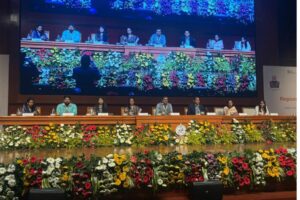
Indo-Gangetic plain faces intense regional & long-range pollution: Study
Bhubaneswar, July 23 (UNI) A recent study by researchers at IIT Bhubaneswar has unveiled surprising insights into urban pollution dynamics across Indian cities, particularly in the Indo-Gangetic Plain.
The study, led by Dr. V. Vinoj, Associate Professor at the School of Earth, Ocean and Climate Sciences, and research scholar Soumya Satyakanta Sethi, analysed two decades of high-resolution aerosol data from 141 Indian cities.
It found a striking contrast in pollution patterns between the country’s southern and northern regions.
According to the study, published in Nature Portfolio Journal – Communications Earth & Environment, southern cities—less impacted by pollution transported from distant regions—tend to exhibit the traditional “urban pollution dome” effect, where pollutant concentrations are higher within the city than in surrounding rural areas.
However, cities in northern and northwestern India, especially across the Indo-Gangetic Plain, show a different pattern.
These regions are subjected to heavy regional and long-range transported pollution, such as dust from deserts and industrial emissions. As a result, many of these cities no longer display the classic pollution dome.
Instead, researchers observed what they term a “punctured pollution dome” or “clean island” effect—where city centres are unexpectedly cleaner than their surrounding areas.
This counterintuitive finding suggests that urban structures, such as tall buildings and uneven surfaces, form an “invisible barrier” that slows wind and traps local emissions.
While this stagnation usually increases pollution inside cities, in some northern cities, the same barrier also prevents external pollutants from entering, leaving the urban core relatively cleaner.
“Pollution tends to accumulate in the surrounding non-urban areas where this barrier redirects the flow,” the authors noted, describing this phenomenon as the formation of “clean air domes” over urban zones.
A schematic accompanying the study illustrates the mechanisms of urban aerosol pollution and clean islands over fast-urbanising Indian cities.
These findings challenge long-standing assumptions that urban areas are always the worst pollution hotspots due to both local emissions and transported aerosols.
The research emphasizes that monitoring pollution only at city boundaries can misrepresent the true pollution dynamics.
The study concludes that achieving sustainable, climate-resilient cities demands a more integrated understanding of how urban structures interact with regional atmospheric processes.
Researchers also highlighted the role of urban digital twins—advanced, city-scale simulation platforms being developed at IIT Bhubaneswar—as vital tools to incorporate these dynamics not only for air quality but also for related challenges like heat stress, changing rainfall patterns, flooding, and long-term climate impacts.
















